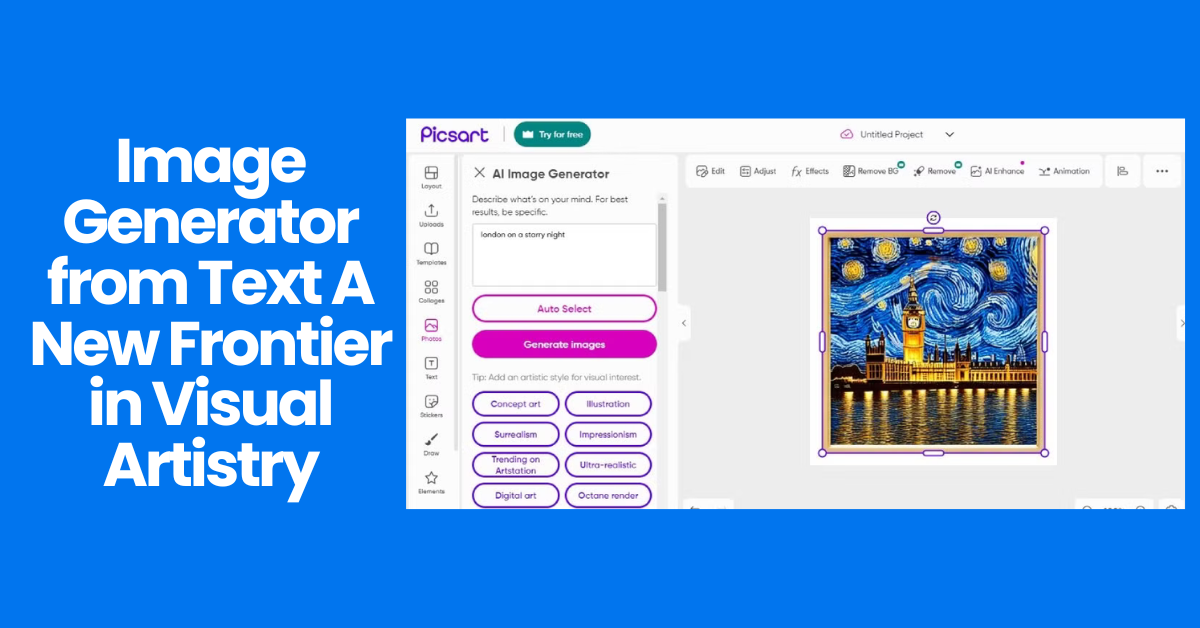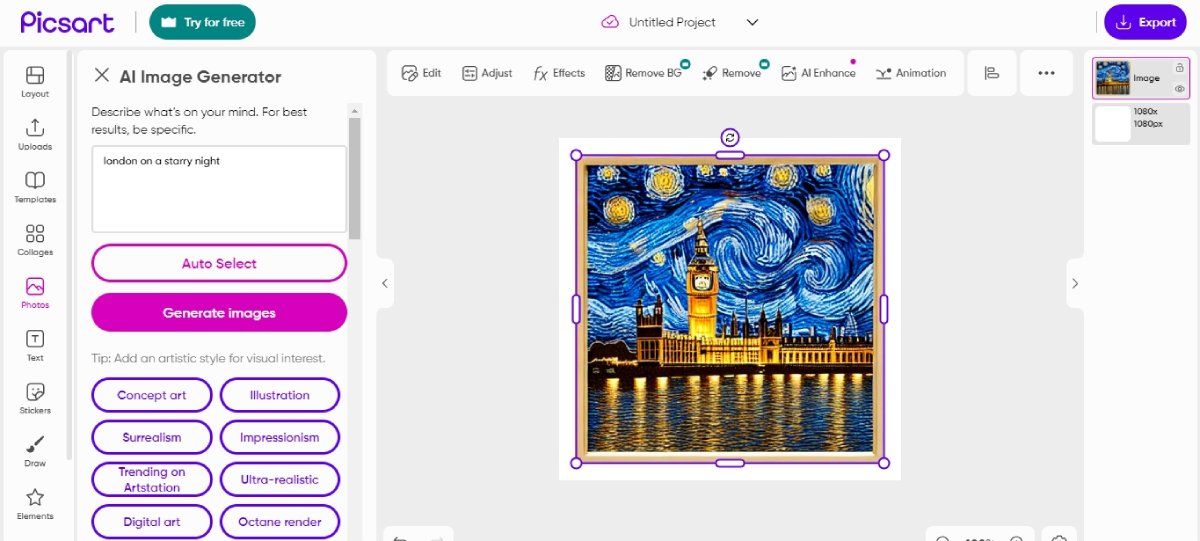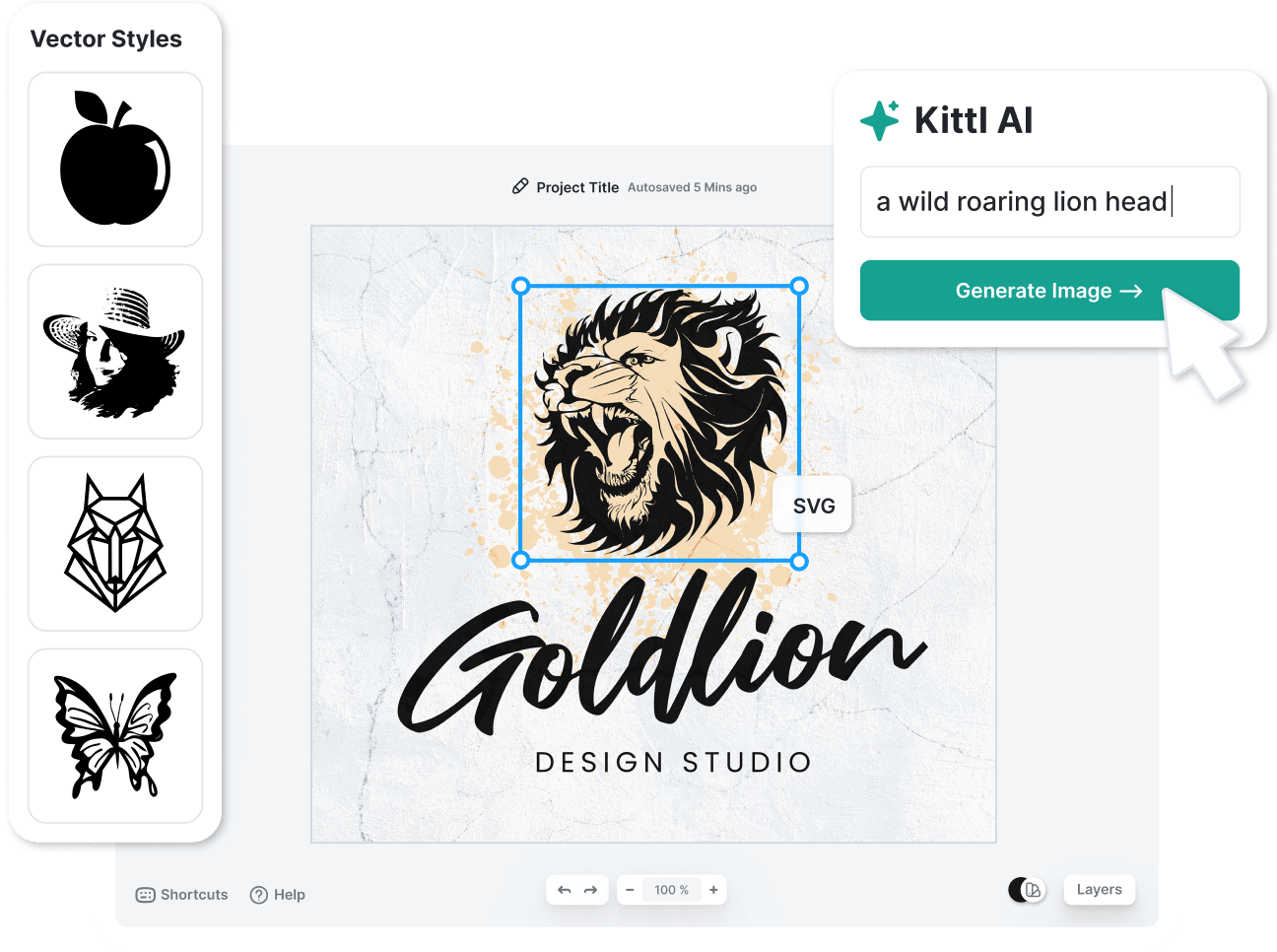
Image Generator from Text A New Frontier in Visual Artistry
- Image Generators
- November 8, 2024
- No Comments
Image generator from text tools are revolutionizing creativity in today’s fast-paced digital landscape. The convergence of technology and creativity has led to the development of powerful image generators that create visuals based on textual input. This exciting innovation opens up new possibilities for artists, designers, and everyday users to bring their imaginative ideas to life with ease. In this blog post, we’ll explore the fascinating world of text-to-image generation, its underlying technology, its impact across disciplines, and the ethical considerations involved. Whether you’re an artist or a tech enthusiast, this guide will offer insights into leveraging these tools effectively.
The Rise of The Image Generator from Text : A New Era of Creativity

In recent years, we have witnessed a significant rise in the development of artificial intelligence (AI) technologies. Among these innovations, AI-powered image generators have gained considerable attention for their ability to transform simple text prompts into stunning visual representations. This surge in interest can be attributed to several factors that have converged to create a ripe environment for creativity.
The Democratization of Art
The advent of AI-driven tools has democratized access to artistic expression. Previously, creating visually appealing images often required extensive training in graphic design or traditional art techniques. However, AI image generators make it possible for individuals without any formal artistic background to generate captivating images simply by inputting descriptive words or phrases. As a result, we are witnessing a flourishing of creativity as people from diverse backgrounds tap into their imaginations.
Bridging the Gap Between Artists and Technology
As technology evolves, so does the relationship between artists and the tools they use. With the integration of AI into the creative process, artists are discovering new avenues for collaboration. Image generators serve as a source of inspiration, helping artists explore different concepts and styles that may not have crossed their minds otherwise. Rather than replacing human creativity, these tools enhance it, providing a unique opportunity for artists to engage with technology in meaningful ways.
The Commercialization of Creativity
The rise of AI-generated imagery has also sparked interest from industries that rely heavily on visual content, such as advertising, marketing, and entertainment. Brands are increasingly turning to image generators to produce high-quality visuals quickly and efficiently. This trend underscores the growing recognition of AI as a valuable asset in the creative business landscape, where time and cost-efficiency are critical.
Turning Words into Pictures: A Comprehensive Guide to Text-to-Image Generators

Understanding the mechanics behind image generators from text provides valuable context for harnessing their potential. These systems utilize advanced machine learning algorithms to analyze input text and generate corresponding visuals. Let’s delve deeper into the workings of text-to-image generation and explore some prominent tools available in the market today.
How Text-to-Image Generators Work
Text-to-image generators rely on neural networks—specifically, generative adversarial networks (GANs) and diffusion models. GANs consist of two components: a generator that creates images and a discriminator that evaluates them. The generator learns from the feedback provided by the discriminator, gradually improving the quality of the generated images.
Diffusion models, on the other hand, operate by transforming noise into coherent images through iterative denoising processes. By analyzing the relationships between different features present in the textual input, these models can effectively translate words into corresponding visual elements.
Popular Tools for Text-to-Image Generation
Several platforms have emerged as leaders in the field of text-to-image generation, each offering unique features and capabilities.
- DALL-E 2: Developed by OpenAI, DALL-E 2 is known for its remarkable ability to generate realistic and imaginative images based on detailed text prompts. Users can specify intricate details, and the model excels at producing creative outputs that align with the requests.
- Midjourney: This platform combines user-centric design with cutting-edge AI technology. It enables users to generate images through simple prompts while providing options for customization, allowing for a personalized artistic touch.
- Stable Diffusion: An open-source tool that empowers users to run text-to-image generation locally. This platform encourages experimentation and offers flexibility for those who wish to dive deeper into the technology.
Practical Applications of Text-to-Image Generation
The versatility of text-to-image generators transcends artistic endeavors. They find applications across various fields, including:
- Marketing and Branding: Companies can create eye-catching visuals for advertisements, social media posts, and promotional materials, saving time and resources while maintaining high-quality standards.
- Game Design: Creators can rapidly prototype character designs, landscapes, and environments, streamlining the game development process and enhancing creativity.
- Content Creation: Writers and bloggers can generate accompanying visuals for their articles, enriching their storytelling and engaging readers more effectively.
Unlocking the Power of Text-to-Image: How AI is Revolutionizing Image Creation

The transformative potential of AI-powered image generators extends far beyond mere convenience; they are fundamentally changing the way we conceptualize and create visual content. By harnessing vast datasets and sophisticated algorithms, these tools enable users to explore uncharted territories of creativity.
Expanding Creative Boundaries
Image generators from text allow users to push beyond conventional limits. Traditional methods of image creation often impose constraints related to skill level and accessibility. In contrast, AI tools empower anyone with an idea to manifest it visually, resulting in a rich tapestry of innovative interpretations. This newfound freedom encourages experimentation and fosters an environment where bold ideas can blossom.
Collaborative Opportunities
With the capability to generate unique visuals based on textual input, AI-powered image generators encourage collaboration among creatives. Artists, writers, and designers can share their ideas in multi-disciplinary projects, leading to synergies that might not have been possible before. By building upon one another’s contributions, teams can yield richer, more engaging outcomes that reflect diverse perspectives.
Cultural Impact
The influence of text-to-image generation extends to cultural conversations as well. As these tools gain traction within online communities, they pave the way for discussions around aesthetics, representation, and the nature of artistic authorship. The ability to generate images based on cultural references invites dialogue about the ways in which technology interacts with identity and expression.
From Imagination to Reality: Exploring the Capabilities of Text-to-Image Generators
The capabilities of text-to-image generators continue to evolve, pushing the boundaries of what is possible in visual storytelling. Through nuanced understanding of language and imagery, these systems can craft compelling visuals that resonate with audiences.
Realism and Surrealism
One of the most remarkable aspects of image generators from text is their ability to oscillate between realism and surrealism. Users can generate lifelike portraits or fantastical scenes with equal proficiency. This flexibility allows artists to choose the tone and style that best suit their narratives, broadening the spectrum of creative expression.
Customization and Control
Many text-to-image generators provide users with tools to fine-tune their creations. By adjusting parameters such as color schemes, composition, and artistic styles, individuals can take greater control over the final output. This hands-on approach not only enhances user satisfaction but also promotes a sense of ownership over the generated artwork.
Case Studies of Creative Success
Several artists have embraced the use of text-to-image generators to achieve notable results. For instance, collaborations between human artists and AI tools have led to the creation of striking visual installations, innovative digital artworks, and even fashion designs. These examples illustrate the potential for synergy between human creativity and technological advancement, inviting us to consider new avenues for artistic exploration.
Beyond Imagination: Using Text-to-Image Generators for Art, Design, and Beyond
While the artistic applications of text-to-image generation are often highlighted, the technology holds promise across a wide array of industries and use cases.
Graphic Design Innovations
Graphic designers are leveraging text-to-image generators to streamline their workflows. By generating initial drafts or inspiration boards based on client briefs, designers can accelerate the ideation process. This efficiency allows for more time spent refining concepts and delivering polished final products, ultimately benefiting both the designer and their clients.
Educational Tools
Educational institutions are beginning to incorporate text-to-image generators into their curricula. These tools can serve as effective teaching aids, enabling students to visualize complex concepts and communicate ideas in novel ways. As students experiment with generating images from text, they develop a deeper understanding of the interplay between language and visuals.
Enhancement of User Experience
Web and app developers are also recognizing the value of integrating text-to-image generation into user interfaces. By providing users with the ability to create custom visuals on demand, companies can enhance user engagement and create personalized experiences. Imagine a social media platform where users can generate unique profile pictures or cover images based on their interests and preferences.
Demystifying the Technology: Understanding How Text-to-Image Generators Work
To fully appreciate the capabilities of text-to-image generators, it’s essential to delve into the technology that powers them. While the concept may seem complex, breaking down the components reveals the magic behind the scenes.
Neural Networks: The Brain Behind the Operation
At the core of text-to-image generation lies neural networks, a subset of AI modeled after the human brain. These networks consist of interconnected nodes (neurons) that process data and learn from patterns. In the case of image generators, the neural network analyzes vast datasets of text-image pairs, identifying correlations between words and visual elements.
Training and Learning Processes
The effectiveness of text-to-image generators depends on rigorous training processes. During training, the model ingests substantial amounts of information, refining its ability to associate specific terms with relevant visuals. This cycle of learning involves feeding the model examples of successful pairs and evaluating its performance against established criteria.
Fine-Tuning and Optimization
Once the initial training phase is complete, developers often fine-tune the model to enhance its specificity and accuracy. Techniques such as transfer learning allow existing models to adapt to new datasets, expediting the training process. As a result, users can expect higher-quality outputs and greater fidelity to their input prompts.
The Future of Image Creation: The Impact of Text-to-Image Generators on Art and Design
Looking ahead, the trajectory of text-to-image generation presents exciting opportunities and challenges for the creative landscape. As technology continues to advance, we can anticipate profound changes in how images are conceived and created.
Emerging Trends in Artistic Expression
As artists embrace AI as a collaborative partner, we may witness the emergence of new art movements centered around technology-driven creativity. Hybrid forms of art that blend traditional techniques with AI-generated components could reshape the visual arts, fostering fresh dialogues about artistry and authorship.
Industry Disruption and Innovation
Industries reliant on visual storytelling can expect a wave of innovation driven by text-to-image generators. Advertising agencies, media companies, and entertainment studios may rethink their creative processes, adopting AI-assisted approaches to meet the demands of modern audiences. This shift could lead to faster turnaround times, lower production costs, and increased creativity.
Ethical Considerations and Challenges
While the future appears promising, it is imperative to address ethical considerations surrounding text-to-image generation. As AI increasingly participates in creative processes, questions arise regarding authorship, copyright, and the implications of generated content on societal norms. Engaging in thoughtful discussions about these topics will be crucial in navigating the evolving landscape.
Beyond the Hype: A Realistic Look at the Limitations and Challenges of Text-to-Image Generators
Despite the remarkable advancements in text-to-image generation, it is essential to maintain a balanced perspective by acknowledging the limitations and challenges inherent in this technology.
Quality Variability
While many generators produce impressive results, the quality of generated images can vary significantly based on the input text. Ambiguous language or overly complex descriptions may lead to outputs that do not align with user expectations. As users become more familiar with these tools, they may need to refine their prompts to obtain optimal results.
Bias and Representation Issues
AI models are inherently influenced by the data they are trained on, which raises concerns regarding bias and representation. If the training dataset lacks diversity, the generated images may perpetuate stereotypes or fail to accurately reflect marginalized groups. Addressing these biases requires ongoing vigilance and a commitment to curating more inclusive datasets.
Technical Accessibility
While many platforms aim to make text-to-image generation accessible to all, technical barriers remain for some users. Individuals with limited familiarity with AI tools or those lacking access to advanced computing resources may find it challenging to engage with these technologies fully. Bridging this gap will be vital to fostering widespread adoption.
Choosing the Right Tools: A Comparison of Popular Text-to-Image Generator Platforms
As the market for text-to-image generators grows, users are presented with an array of options. Choosing the right platform can significantly impact the experience and quality of generated visuals.
Key Features to Consider
When evaluating different text-to-image generators, users should consider several factors, including:
- Output Quality: Assess the quality and realism of generated images, as well as the variety offered by the platform.
- User Interface: A user-friendly interface enhances the overall experience, making it easier for individuals to input prompts and customize settings.
- Customization Options: Look for platforms that allow users to adjust parameters and tailor outputs according to specific preferences.
Comparing Leading Platforms
Several popular platforms stand out in the crowded field of text-to-image generation.
- DALL-E 2: Known for its exceptional output quality, DALL-E 2’s intuitive interface makes it accessible to users with varying levels of expertise. Its ability to understand nuanced prompts sets it apart from competitors.
- Midjourney: Midjourney is praised for its focus on collaborative features, allowing users to work together on projects seamlessly. Its customizable settings empower creators to infuse their personal flair into generated visuals.
- Stable Diffusion: As an open-source option, Stable Diffusion appeals to tech-savvy users eager to explore the intricacies of text-to-image generation. Its flexibility makes it a favorite among those seeking to experiment with advanced configurations.
Ethical Considerations in Text-to-Image Generation: Exploring the Impacts and Responsibilities
As we navigate the evolving landscape of text-to-image generation, it is essential to explore the ethical implications associated with this technology. From issues of authorship to the responsible use of AI-generated content, several key considerations warrant careful attention.
Copyright and Authorship
The question of authorship looms large in the realm of AI-generated visuals. Who truly owns an image created by an algorithm? As image generators from text become more prevalent, conversations around copyright law and intellectual property rights must evolve to account for the complexities introduced by AI involvement.
Societal Impacts
The widespread adoption of text-to-image generators also raises concerns about the societal impacts of AI-generated content. The potential for misinformation, deepfakes, and misleading visuals poses risks to public discourse and trust in media. As users harness these tools for creative expression, ethical considerations surrounding responsible usage become paramount.
Inclusivity and Representation
As mentioned earlier, biases embedded in training datasets can lead to harmful representations in generated images. To combat this issue, stakeholders in the AI community must prioritize inclusivity and representation when curating datasets. Engaging diverse voices in the development process can help ensure that generated visuals reflect the richness of human experience.
Conclusion
The rise of image generators from text marks a transformative moment in the landscape of creativity and visual expression. As we explore the capabilities and implications of this technology, it becomes clear that we stand at the precipice of a new artistic frontier. From empowering individuals to bridge the gap between imagination and reality to revolutionizing industry practices, the potential for innovation is immense.
However, with great power comes responsibility. As we embrace the possibilities of text-to-image generation, we must engage critically with the ethical considerations that accompany this technology. By prioritizing inclusivity, fostering collaboration, and addressing biases, we can shape a future where AI acts as a true partner in the creative journey.
As we look forward, the intersection of AI and art holds boundless promise. By harnessing the power of text-to-image generators, we invite a vibrant dialogue about the nature of creativity, authorship, and the role of technology in shaping our collective visual narrative. The canvas of the future awaits—let us paint it boldly.
Looking to learn more? Dive into our related article for in-depth insights into the Best Tools For Image Generation. Plus, discover more in our latest blog post on What AI Can Generate Images. Keep exploring with us!
Related Tools:
Image Generation Tools
Video Generators
Productivity Tools
Design Generation Tools
Music Generation Tools
